Structural Concrete Repair & Restoration
We specialize in Structural Concrete Repair and have successfully completed many projects throughout South Florida. Whether you need to repair a concrete column, a balcony, a concrete roof, a retaining wall, foundations, or a concrete staircase our concrete repair contractors can help. As a concrete repair company in South Florida we can ensure your concrete repair project get’s done correctly and according to schedule. Another reason why you might need to perform a structural Concrete repair is when you need to pass a Milestone Inspection or a Building Recertification. The areas we provide Concrete Repair in all of South Florida including Fort Lauderdale, Miami-Dade, Palm Beach, and the surrounding areas. We specialize in Concrete Restoration in Broward, Miami Dade, and Palm Beach. Whether you have an old building that needs to be restored or a new Building that was not built properly.
QUICK MENU
WHY HIRE US FOR
CONCRETE REPAIR?
We have over 30 years of experience performing Concrete Repairs in South Florida. As concrete repair contractors we have worked with all South Florida Building Departments and countless Building Associations, Property Managers, and Building Owners throughout the years. Our Engineers are up to date with all of the latest Building codes and can make sure your concrete repair is done right the first time. From working with large corporations, like Coca-Cola and Office Depot, to small building repairs, we can handle any project you can throw at us. Give us a call and we would be happy to answer any questions you may have regarding structural concrete repairs in South Florida.
In these videos, Greg Batista explains Concrete Repair in South Florida.
How to identify probLems in concrete
As you can see there are many ways your concrete repair can fail. We have over 30 years of experience as concrete repair contractors we always follow the latest building trends and building department requirements to ensure your concrete repair is successful.
The salt ions in the air are one of the main reasons for concrete failure in Florida and can cause the concrete to expand and break off. Salt chlorides in the air make their way into the concrete and start to rust the structural rebar inside. When the rebar inside the concrete rusts it causes the concrete to expand which degrades the structure and can lead to catastrophic failure. Here are some things you can look for on the exterior or interior of your building in order to recognize problems with your concrete structure.
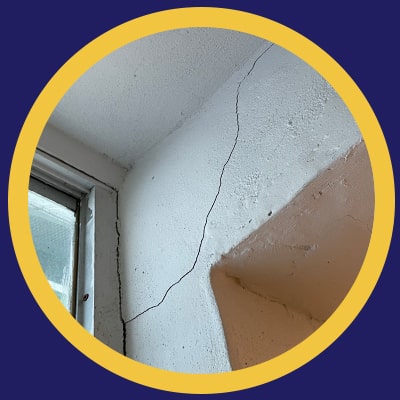
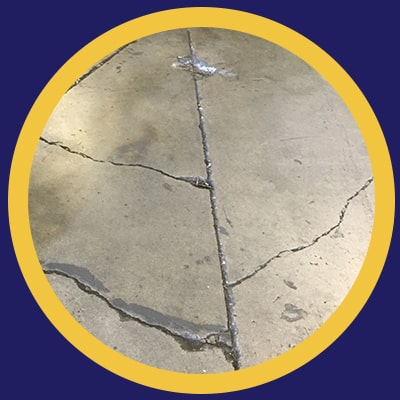
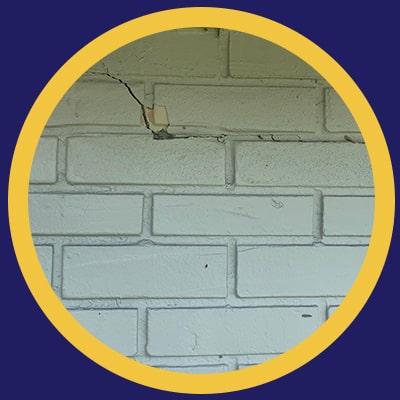
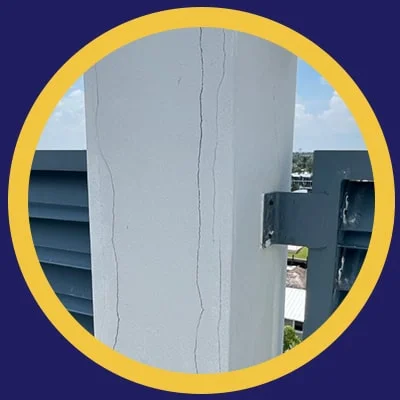
Cracks In Concrete
Any sign of cracking is not a good sign. Although many small cracks might not look like much of an issue they can have underlying issues which is causing the surface to crack. When performing a concrete repair in South Florida we thoroughly examine the area and remove any troublesome areas in the concrete. Many times we need to remove areas of stucco to identify the underlying cause of concrete cracks.
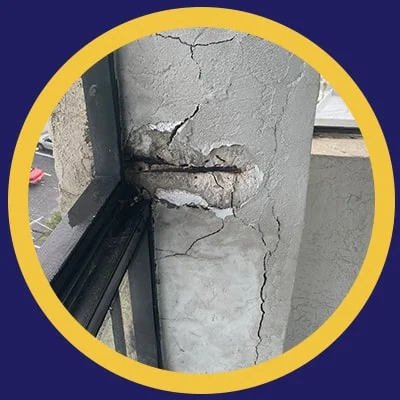
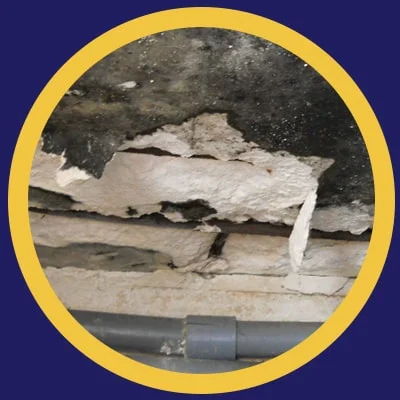
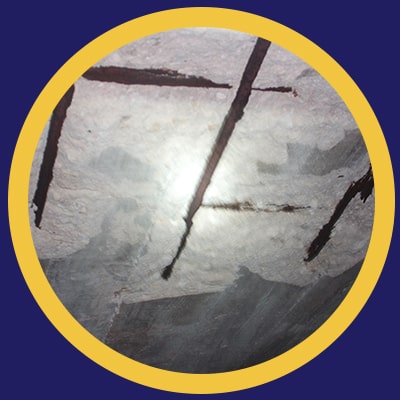
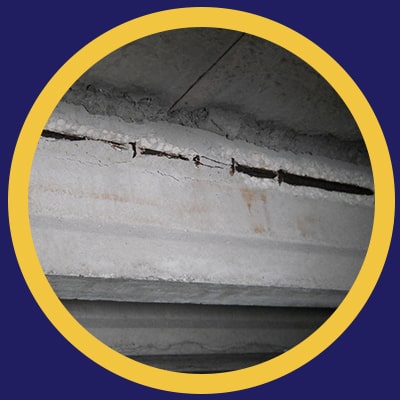
Concrete SPalling
Concrete spalling is one of the first signs that your concrete structure has been compromised and needs to be repaired. But what is concrete spalling? A spall is when a small piece of concrete is detached from a larger section. It can be produced by a variety of external factors such as corrosion, weathering, cavitation, or excessive rolling pressure.
These are all factors that can contribute to spalling. When we examine the concrete spalling, we may need to break off pieces of the concrete in order to investigate the underlying issues beneath. You might just see a small concrete spall but there may be additional corrosion and damage not visible to the naked eye.
For this reason, Cities and Counties in South Florida take spalling very seriously.
Concrete REPAIR
SERVICES
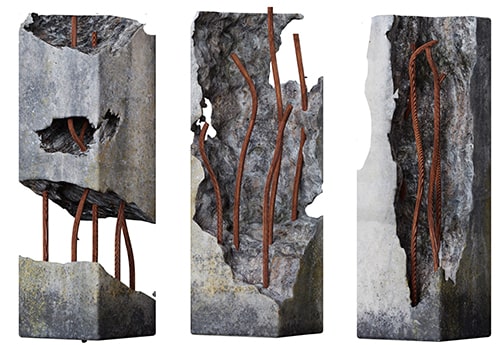
Concrete columns are a vital part of any buildings infrastructure. If your concrete columns have spalling or cracks in them then there is a high chance that there are underlying issues that need to be addressed. We provide concrete column repair services in all of South Florida. Whether all the columns in your building need to be repaired or it is just one column we are happy to help you get it fixed the right way.
The most important element we inspect when analyzing a compromised concrete column is the structural rebar underneath. Cracks in a column can expose it to harsh elements like salt which can corrode the rebar and cause it to expand producing spalls or cracks that will increase over time. That’s why it is imperative to get these spalls or cracks inspected to prevent further damage and degradation of the structure. Regardless of whether it is a concrete foundation repair or you have a column somewhere in your building we can repair it.
Concrete foundation piers are another field we specialize in. The foundation of your building is what keeps it standing straight so it’s important to get your foundation piers inspected and repaired at the first sign of damage. We can handle all types of concrete foundation repairs across South Florida. Since we are concrete repair contractors we have repaired countless concrete columns across South Florida.
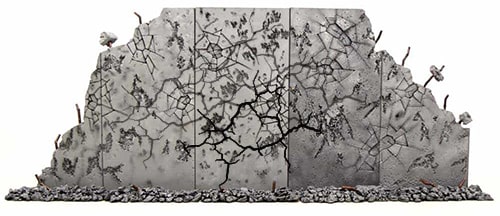
Concrete walls are another area that can become damaged, and ultimately fail through spalling. Just because the crack looks small it does not mean there is no additional damage underneath. These small cracks will increase over time eventually leading to a compromised wall. When we fix cracks in concrete walls, we thoroughly examine the area removing portions of masonry to reveal the underlying issues.
This is especially urgent when you have a load bearing wall that is part of the structural support system. We have inspected thousands of buildings and can typically quickly identify what issues you are experiencing and why your wall is cracking or spalling. Settling of the structure is another reason why a concrete wall might crack.
We can handle any concrete wall repair you may be experiencing. Whether you have a crack in your exterior wall, retaining wall, or any other wall in your building or home we can inspect, engineer, and repair all types of cracks. Concrete wall repairs when handled by a professional contractor can look as good as new and most importantly will be structurally sound for years to come.
Repairing a crack in foundation wall at the first sign of trouble can stop it from causing more severe damages. Whether you would like to repair a concrete block wall or a poured concrete wall we can make sure your wall is looking as good as new. Fixing a cracked foundation wall is what we do best so give us a call today or send us a message to get a quick quote.

One of the elements that gets damaged frequently on high-rise condos and buildings are the balconies. Balconies are usually exposed to the elements and can have cracks or spalling like any other concrete structure. Although balconies may not usually be part of the main supporting structural elements they are a crucial element to the safety of the people living in the space.
Chances are if you have cracking on your balconies then you have other issues in your building that need to be addressed as well. We have done thousands of 40-year inspections as well as milestone inspections and have repaired many concrete balconies in the process. If you’re looking for an experienced concrete balcony repair contractor, we can gladly look at your balcony and provide you with a quotation for engineering or repairs.
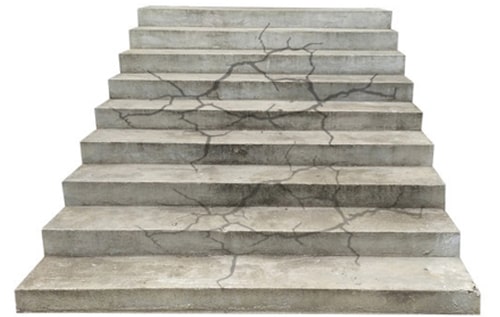
CONCRETE STAIR REPAIR
Concrete staircases, just like other concrete structures, are susceptible to various forms of damage. This becomes a significant concern for outdoor concrete stairs, which endure the relentless wear and tear of environmental conditions. The urgency to address these issues increases for buildings situated near the coast, where the salty air can accelerate the degradation of a compromised staircase, potentially leading to hazardous conditions for users.
Neglecting the structural integrity of concrete stairs could lead to catastrophic failures, such as a collapse, which could result in personal injuries. Our company boasts extensive expertise in repairing concrete stairs. We commit to restoring the aesthetics of your staircase and more crucially, to reinforcing its safety and durability. By choosing our repair services, you ensure that your concrete stairs are not only visually restored but are also structurally sound, providing a secure passage that is built to last. Hire a concrete repair contractor that can ensure your staircase gets repaired properly.
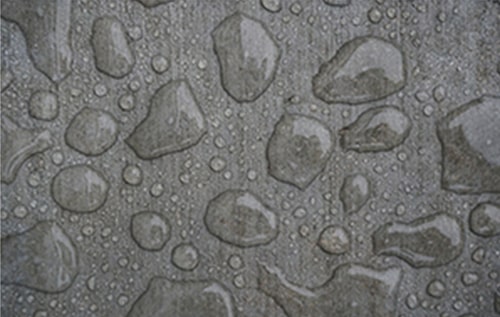
CONCRETE WATERPROOFING
Concrete waterproofing is an important step in protecting a newly poured concrete structure or a concrete repair. Due to concrete porous nature, applying a concrete waterproofing solution will help protect your concrete structure and will ensure its longevity. Another reason to apply a protective waterproof coating to concrete is to limit the amount of humidity and moisture that can penetrate inside your building.
This holds especially true for sub-basements or any enclosure that is below ground. South Florida is especially humid and this humidity can penetrate into the concrete causing the underlying rebar to corrode and expand. We only use the best materials in order to ensure the waterproofing lasts and continues to protect your concrete over time.
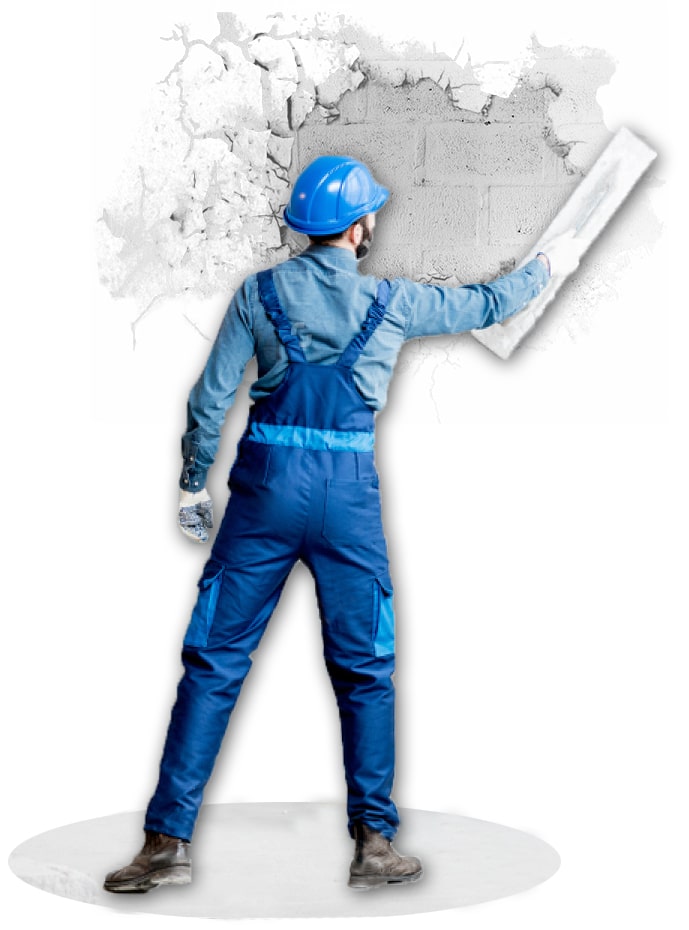
MORTAR & Stucco REPAIR
Not every crack in concrete signifies a need for structural repair. Often, it’s merely the outer layer of stucco that has sustained damage due to age or being exposed to South Florida’s harsh elements. Mortar (or stucco) is a specific blend of sand and cement, is applied over concrete structures for a smooth finish. Cracks in the mortar can sometimes indicate deeper problems, but they can also be cosmetic, resulting from improper curing or using the wrong type of mortar for the project.
Our evaluation process includes an examination of the mortar to determine if the cracks are limited to this outer layer or if there are underlying issues that need addressing. In our field visits, we’ve encountered instances where mortar was incorrectly used as a substitute for concrete, or the wrong variety of mortar was applied, leading to premature cracking and unsightly appearances.
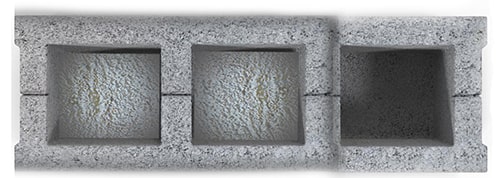
Fill-CELL COLUMNS
Filled-cell columns are structural enhancements where concrete blocks are filled with poured concrete for added fortitude. This technique is predominantly utilized near doors and windows to reinforce these areas, safeguarding them against the force of extreme winds during hurricanes. They also serve as a defense against debris that could strike windows or doors amidst a storm. While new window installations typically mandate these reinforced columns per building codes, we also advise their inclusion in older homes undergoing renovations to ensure they are fortified against hurricanes or severe storms.
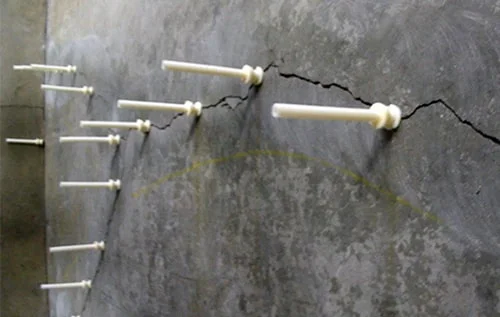
EPOXY INJECTION
poxy injection is another method that can be used to repair concrete. The process involves using a special device filled with a special type of epoxy. This epoxy is injected to the concrete with special tools and reaches all of the loose nooks and crannies inside the concrete. This method can be used to repair hairline cracks or deeper cracks in concrete without having to remove any material.
When using epoxy injection, it is important to use an epoxy that meets the necessary standards for epoxy-resin-based bonding systems in order to ensure a lasting repair. This can be used in foundations or any other area that has cracks in it. These epoxies provide higher strength than concrete and can help seal holes or cracks in your concrete structure.
Our team of engineers and construction professionals can analyze cracks in your concrete structures and advise you if epoxy injection is the right solution for your repair. If your crack does not merit an epoxy injection, we can advise you on the best solution to make sure your repair is done right.
FAQ
WHAT IS THE COST TO REPAIR CONCRETE?
Concrete repair cost can vary from project to project. Some of the factors that can affect the cost of a concrete repair include the quality of the concrete used, the amount of concrete used, the additional materials added to the concrete, and the complexity of the project.
Another factor to consider when determining the cost of a concrete repair is the cost of permits. We will pull all of the required permits in order to ensure your repair gets done properly the first time. Concrete repair permits vary widely based on what needs to be done in order to ensure the structure is safe and will withstand any environmental or physical abuse.
When considering the cost of a concrete repair you should also consider the experience of the company used for the repair. We have worked with many large corporations and small building owners in the past and have over 30 years of experience in this field. The best way to find out the cost of your specific concrete repair is to use our live chat system or give us a call.
Generally, an accurate estimate for the cost of repairs can be provided only after a thorough inspection and assessment of the damaged area. When we deliver a quotation, it will detail the precise cost of the necessary concrete repairs before any work commences. Be advised that during the evaluation, additional issues may be uncovered that require attention. For example, if we discover rust on the reinforcing steel (rebar), it may be necessary to remove more material to fully reveal and address all of the compromised rebar.
CAN AN ERRONEOUS ENGINEERING DESIGN AFFECT THE CONCRETE’S LONGEVITY?
If an engineer overlooks the expected loads or environmental factors that could impact a concrete structure, there is a high risk of failure. While flawed design is uncommon, it does occasionally play a role in structural failures. More often than not, concrete issues arise not from original design flaws but from modifications, such as additional weight that the structure wasn’t engineered to support. This can lead to deformation and eventual fracture of the concrete.
As a combined engineering and construction firm, we pride ourselves on our team of highly qualified engineers and builders who ensure your concrete repairs are robust and durable. We carefully engineer each repair to resist the various stresses and environmental changes that may affect it. Should there be any potential for increased load in the future, inform us so we can integrate sufficient reinforcements to accommodate any modifications you may consider. In Florida, where hurricanes are a prevalent threat, we always factor in such severe weather conditions when devising a concrete repair strategy.
Why Does Concrete Fail?
Concrete can fail or degrade over time for a variety of reasons. One of the main reasons for Concrete failure in South Florida is due to the exposure to the coastal elements like the ocean water and sun exposure. Especially the beachfront high-rise condos on the coast of Miami, Miami Beach, South Beach, Sunny Isles, Palm Beach, and Fort Lauderdale.
The salt ions that are in the air near the ocean are highly corrosive and can rust the structural rebar hidden underneath. This causes the rebar to rust and expand which starts to degrade the surrounding concrete. Some of the other reasons your concrete structure might be falling apart are due to bad design, wrong materials used, additional load added to the structure after it was built, or ground settling. Repairing some sort of concrete structure is inevitable at one point or another if your building or home is near the coast.
Ground Settling
Ground settling occurs when the dirt, sand, or limestone underneath the structure starts to shift. There is always going to be some level of settling in any structure but when there is excessive settling it can cause more pressure on the structural concrete elements which in turn causes it to fail. Doing a thorough analysis of the ground composition can help minimize the effects that settling will have on a structure. If the ground is not compacted or prepared properly it will also cause the ground to shift when the building is complete.
Bad Design
If the engineer who designed the concrete structure did not take into account the load or potential environmental factors that can affect a concrete structure it will surely fail. Bad design is usually rare but is a contributing factor when it comes to failing concrete. Most of the time the concrete fails not due to bad design but is due to an addition that is made on the existing concrete. Adding more weight to a structure that was not designed for it can cause concrete to bend and eventually break.
Due to the fact that we are also an Engineering and construction firm, we have a group of highly skilled engineers and concrete repair contractors who will make sure we design your concrete repair properly so it can stand the test of time. We meticulously plan all of our concrete repairs to withstand the pressures and environmental changes that can affect the structure. If you plan to add additional weight to the structure you can let us know so that we can add additional reinforcements for any future changes you might require. A Hurricane is one of the worst natural disasters we experience in Florida and we will always take that into account when designing a concrete repair solution.
INCORRECT CONCRETE MIX
Concrete repair is a nuanced and scientific task, though it may not seem so at first glance. The type of mix used varies greatly depending on the intended use and location of the concrete, with the aim of achieving the necessary resilience and lifespan. The specific formulation of the concrete is crucial, as certain applications may require quick-setting variations, while others may need to be bolstered with additional materials such as pebbles, fiberglass, or metal fragments to enhance ductility or strength.
Our team is seasoned with years of expertise and is adept at determining the correct concrete mixture for any repair job. We have refined a variety of concrete repair techniques over time to ensure they are resilient against environmental challenges.
BAD QUALITY MATERIALS
Not all concretes are built the same. The quality of the concrete is very important for the longevity. Concrete is a mixture of cement, sand, water, and gravel. If any of the materials used are not high quality it can affect the overall structure. We have been doing structural concrete repairs for over 30 years and only use the best materials.
One thing to consider is that while you may get a cheaper quote for another company you should question the quality of materials used when getting a quote. High-quality concrete repairs are more expensive but will ensure that the concrete repair will last and will withstand any weather or climate change.
Exposure to Coastal Elements
Buildings situated close to the sea are more prone to issues such as concrete cracking and spalling due to their exposure to aggressive marine elements. Properties, particularly those on the waterfront or in close proximity to the shoreline, encounter elevated levels of corrosive substances. Salt is the main culprit affecting these structures; airborne salt particles can infiltrate minute crevices and reach the structural steel reinforcement within, leading to corrosion. This rusting of the reinforcement bars results in concrete expansion and breakage, which compromises structural integrity and could ultimately cause the structure to fail or even collapse. These corrosive agents are particularly concentrated in coastal atmospheres.
INADEQUATE REPAIRS AND/OR STEEL REINFORCEMENT IN CONCRETE
Improper reinforcement is another reason concrete may deteriorate. The amount and type of reinforcement necessary can vary based on the load the concrete must support and its specific use. Some companies might offer low-cost repair services but skimp on proper reinforcement techniques, compromising the longevity of the repair. Our practice is to adhere to local building codes and obtain the necessary permits to guarantee that your concrete repair is sufficiently reinforced.
NOT ENOUGH CURING TIME
The curing (or drying) time for concrete can vary significantly based on the mix utilized. If the curing process is rushed or not managed correctly, it can lead to early cracking and subsequent deterioration. For situations that require faster setting times, specific concrete mixtures are designed to expedite the drying process. A common cause of issues such as spalling or cracking is the improper curing of concrete.
Typically, concrete sets enough for foot traffic within 24 to 48 hours, but it doesn’t achieve its full strength until approximately 28-30 days have passed. It’s crucial to avoid placing heavy loads on the concrete before it has completely cured. Our repair procedures incorporate these considerations to ensure optimal results.
Can crumbling concrete be repaired?
Yes with the right concrete repair contractor you can repair most concrete walls, stairs, and balconies. In order to ensure the concrete element is repaired properly most of the crumbling concrete will need to be removed. Once the loose concrete is removed the structure may be reinforced and then covered in fresh concrete. Eroded concrete can happen due to salt or other harsh elements which it is exposed to in South Florida.
Why hire us as your concrete repair contractor?
With over 100 years of combined experience we specialize in concrete repair. Hire a concrete repair contractor with experience who can handle your project from start to finish. From designing concrete repair plans to pulling a permit to getting the repairs done we have the knowledge and tools to ensure your concrete repair projects get done on time and using the proper methods. As you can see concrete repair is not a simple job and requires extensive knowledge of material science and the composition of concrete structures. Hire a company you can trust with an extensive background in concrete repairs across South Florida.
MAIN OFFICE
3806 DAVIE BLVD, FORT LAUDERDALE, FLORIDA 33312
BY APPOINTMENT ONLY PLEASE CALL TO SCHEDULE A VISIT
CONCRETE REPAIR SERVICE Areas IN Miami-Dade
- Design District
- Miami Beach
- South Beach
- Downtown
- Brickell
- Surf Side
- Wynwood
- Allapattah
- Mid Beach
- The Roads
- Edge Water
- Cutler Bay
- Homestead
- Florida City
- Key Biscayne
- Bay Harbor Islands
- Hialeah Gardens
- Hibiscus Island
- Golden Beach
- Florida City
- Opa-locka
- Doral
- Hialeah
- La Gorce
- Key West
- Key Largo
- Sunny Isles
- Indian Creek
- South Miami
- West Flagler
- Palmetto Bay
- Virginia Gardens
- Coconut Grove
- Miami Springs
- Little Havana
- Coral Gables
- Bay Harbor
- Bal Harbor
- Aventura
- Medley
- Dadeland
- Pinecrest
- Sweetwater
- West Miami
- Miami Shores
- Miami Springs
- Miami Gardens
- North Miami Beach
CONCRETE REPAIR SERVICE AREAS IN BROWARD
- Hallandale Beach
- Pompoano Beach
- Fort Lauderdale
- Flamingo Park
- Las Olas Isles
- Harbor Beach
- Coral Shores
- Melrose Park
- Victoria Park
- Dillard Park
- Lake Ridge
- Sunset
- City View
- Hollywood
- Galt Mile
- Harbordale
- Rock Island
- Dania Beach
- Tarpon River
- Coconut Creek
- River Landings
- Poinciana Park
- Melrose Manors
- Lauderdale by the sea
- Sunrise Intracostal
- Lauderdale Beach
- Deerfield Beach
- Pembroke Pines
- Coconut Creek
- Imperial point
- Central Beach
- Chula Vista
- River Oaks
- Plantation
- Davie
- Margate
- Miramar
- Tamarac
- River Run
- West Park
- Knoll Ridge
- Victoria Park
- Lighthouse Point
- Lauderdale West
- Boulevard Gardens
- Middle River Terrace
- Southwest Ranches
- North Lauderdale
- Golden Heights
- Wilton Manors
- Flagler Village
- Central Beach
- Oakland Park
- Coral Ridge
- Cooper City
- Riverland
- Parkland
- Rio Vista
- Weston
- Sunrise
- Edgewood
- Coral Springs
- Sailboat Bend
- Riverside Park
- Pembroke Park
- Hillsboro Beach
- Riverland Village
- Poinsettia Heights
- South Middle River
CONCRETE REPAIR SERVICE AREAS IN PALM BEACH
- South Palm Beach
- Boynton Beach
- Delray Beach
- Boca Raton
- Atlantis
- Golf
- Tequesta
- South Bay
- Wellington
- Cloud Lake
- Glen Ridge
- Belle Glade
- Briny Breezes
- Lake Clarke Shores
- Royal Palm Beach
- Highland Beach
- Gulf Stream
- Greenacres
- Haverhill
- Jupiter
- Westlake
- Hypoluxo
- Juno Beach
- Palm Springs
- Riviera Beach
- Jupiter Inlet Colony
- Palm Beach Gardens
- Lake Worth Beach
- North Palm Beach
- Mangonia Park
- Lake Park
- Lantana
- Pahokee
- Manalapan
- Palm Beach
- Ocean Ridge
- West Palm Beach
- Palm Beach Shores
- Loxahatchee Groves

